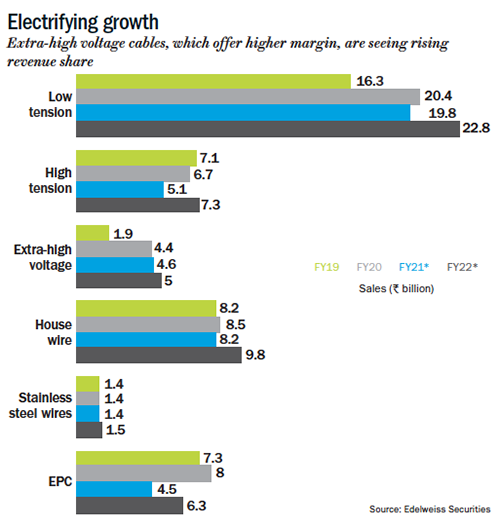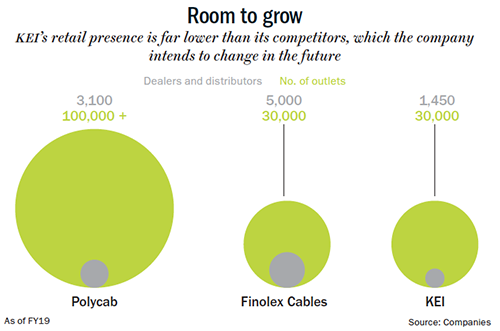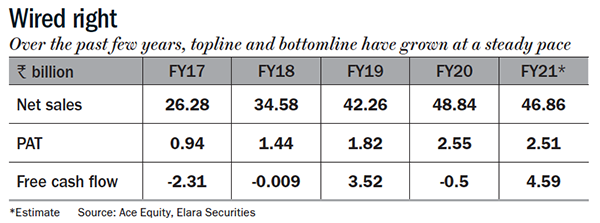 When a stunning wealth creator in FY18 stuns you by reversing dramatically into a wealth destroyer in the next fiscal it sets in disbelief and distrust that’s difficult to dislodge. I have been tracking Bombay Dyeing since mid-2017 at levels of Rs.50 and have used it passionately as a valuation case study in my fundamental equity value versus price workshops since.
When a stunning wealth creator in FY18 stuns you by reversing dramatically into a wealth destroyer in the next fiscal it sets in disbelief and distrust that’s difficult to dislodge. I have been tracking Bombay Dyeing since mid-2017 at levels of Rs.50 and have used it passionately as a valuation case study in my fundamental equity value versus price workshops since.
After its high of Rs.213 (split-adjusted) in 2008, the stock flew to a historic high of Rs.322 in early May 2018 with a market cap of Rs.66.50 billion and then equally dramatically slumped 75% to a 52-week low of Rs.82 and a market cap of Rs.17 billion in October 2018. It is currently at Rs.143 with a market cap of Rs.29 billion.
What caused this roller-coaster ride? It was a combination of fundamentals, as net worth turned negative overnight on transition to Indian Accounting Standard 115, and market movement, as huge unwinding was in progress of an earlier build-up long position that smacked of market operators at play. Further, switching of borrowings from banks to Dewan Housing Finance Corporation and Indiabulls Housing Finance added to the market nervousness.
The New Real(i)ty
Did you know that Bombay Dyeing was actually a Sensex constituent till 1996 on the back of being a leading textile player! Cut to present where the textiles and polyester business has been struggling for years, forcing the promoter a decade ago, like many other textiles companies at the turn of the century, to monetise the company’s prime land bank in Mumbai, located at Worli (25 acres) and Wadala (29 acres). Currently, Bombay Dyeing outsources its textile production, while its polyester operations has been posting a flat topline for some years. A look at the segmental revenues for the past five years reveals the division is really going nowhere and hardly contributes to the bottomline. It’s the real estate buzz that’s going to get louder and better in the coming years and as expressed in the directors’ report in the FY18 annual report: “The business is poised to become the single-largest revenue earning division of the company on a topline basis and will be a substantial contributor to the bottom line growth of the company”
As of Q3FY19, the company had close to 8 million sq ft to develop. Currently, in Island City Center (ICC), a 1.1 million sq ft residential project of two 60 storey towers, 65% of the project has been sold at Rs.45,000/sq ft. The project is due for completion in a record four years since the start of construction. The company is also launching a commercial building of 1 million sq ft at Worli. The division has debt of Rs.35 billion, which will be significantly reduced in the coming quarters from the ICC cash flow. Of the 8 million sq ft with development potential of Rs.300-Rs.350 billion for the next seven to eight years, 2 million sq ft is at Wadala and over 5.5 million sq ft is at Worli.
Accounting Blues
The biggest shocker came from the transitioning of accounting standards from the Generally Accepted Accounting Principles (GAAP) to Indian Accounting Standards, effective from FY18. The impact has been debilitating as the net worth has been adjusted downwards from Rs.12.24 billion (FY17) and Rs.12.86 billion (FY16) to a negative Rs.13.1 million for FY17 and negative Rs.1.73 billion in FY16.
Earlier a revaluation reserve was created to record the difference between the cost of freehold land (including FSI entitled thereon) transferred from fixed assets to stock in trade at market price which, in turn, was released to the profit & loss account in proportion of revenues recognised under the percentage of completion method (POCM) on entering into agreements or contracts of sale of such inventory. The audited FY16 and FY17 revaluation reserves were Rs.9.70 billion and Rs.8.81 billion, respectively.
As per Accounting Standard 115 ‘Revenue from contracts with customers’ is applicable from April 1,2018. This involves recognition of real estate revenues only on completion of the ICC project and obtaining the occupation certificate (OC). Bombay Dyeing has adopted the modified retrospective approach for this ICC project that was not completed as on April 1,2018 and for which they had taken POCM revenues in earlier years. The management has had to reduce Rs.17.73 billion from the opening retained earnings, as on April 1, 2018, apart from restating a lower net worth in FY17 and FY16.
This has led to an interesting accounting situation wherein the audited positive net worth of Bombay Dyeing, as on March 31, 2018, of Rs.6.36 billion, comprising of equity of Rs.410 million and reserves of Rs.5.95, billion turned negative Rs.11.36 billion. The half-year statement of assets & liabilities, as of September 30, 2018, showed a negative net worth of Rs.8.58 billion, of which reserves were negative at Rs.8.99 billion, after adjusting for the half year profit. However, Q3 FY19 shows a loss, thus reducing the profit for 9MFY19 to just Rs.100 million. This would, thus, mean that the negative net worth climbs back to Rs.11.26 billion. Further, negative reserves of Rs.3.37 billion will also enter the balance sheet for FY19, post the de-merger of the real estate Business of Scal Services (SSL) into Bombay Dyeing
 Work on ICC Tower One should be completed in the coming quarter and the OC should follow post that. Bombay Dyeing is also learnt to have got the OC for Tower Two till the 37th Floor. It remains to be seen how much of the Rs.17.73 billion reduced from retained earnings is reversed back and how much more revenue is recognised in FY19, on the basis of the OC received in March 2019.
Work on ICC Tower One should be completed in the coming quarter and the OC should follow post that. Bombay Dyeing is also learnt to have got the OC for Tower Two till the 37th Floor. It remains to be seen how much of the Rs.17.73 billion reduced from retained earnings is reversed back and how much more revenue is recognised in FY19, on the basis of the OC received in March 2019.
The significant change to the balance sheet of Bombay Dyeing is the transfer of all real estate-related assets and liabilities of Scal at a book value, as on June 30, 2018. This includes a negative reserve of Rs.3.37 billion and outstanding borrowings of Rs.5.50 billion and Rs.1.86 billion in current assets as short-term loans and advances. Scal’s two major real estate projects will shift to Bombay Dyeing. SSL holds the allotment rights for 192 apartments in the ICC project and also the redevelopment rights in Project C (Prabhadevi Nagar Shivkrupa Cooperative Housing Society) which will redevelop 100 residences on a build-up area of 62,000 sq ft.
Investment Cushion
Bombay Dyeing holds 10.80% stake in Bombay Burmah, whose 50.65% holding in Britannia Industries is valued at Rs.380 billion. If Britannia’s stake was sold at current prices then Bombay Dyeing’s entitlement would be Rs.38 billion, much more than its current market cap.
The ICC project is worth Rs.50 billion, considering 1.1 million sq ft at Rs.45,000/sq ft. Future cash flow from this should aggregate to an estimated Rs.32 billion from an estimated cash of Rs.20 billion yet to be received from sold units and value of unsold inventory of Rs.16 billion. The current debt of Rs.35 billion will be reduced significantly once the project’s cash flow kicks in, and FY20 onwards we will see a stronger balance sheet. In fact, the development value of Rs.300-350 billion of close 8 million sq ft should reflect in the P&L over the next seven to eight years. The operating margin, too, will be high as the land acquisition cost is low since Bombay Dyeing has owned this land for decades.

Once the full OCs of the two ICC Towers are in hand, one can expect Bombay Dyeing to announce new mixed-use launches in phases. Once the company-owned Mumbai land bank is developed, Bombay Realty can be called upon to execute development from the Wadia Group & Trust’s land bank of 10,000 acres held across India, of which 700 acres in Mumbai with 70 acres in prime locations.
If the company clocks profit in four digits annually, it will result in higher earnings multiples. A healthy cash flow and bottomline means a healthy book value as well, going forward. For instance, a networth of anywhere between Rs.10 billion and Rs.40 billion would translate into a book value per share in the range of Rs.48-94, and a price to book value of 2.8x-0.7x at the current market price. In short, bear the negative networth pain today for a multi-bagger tomorrow.
The writer has a family holding in Bombay Dyeing











